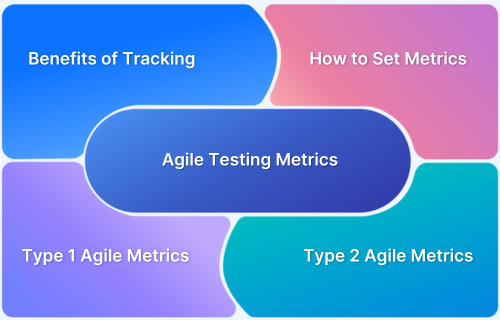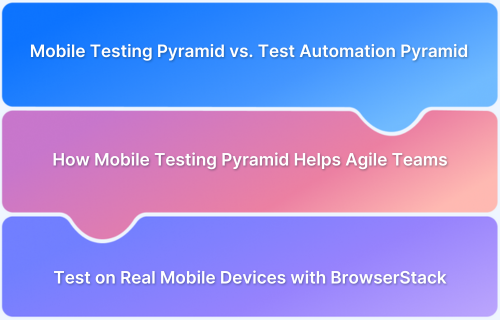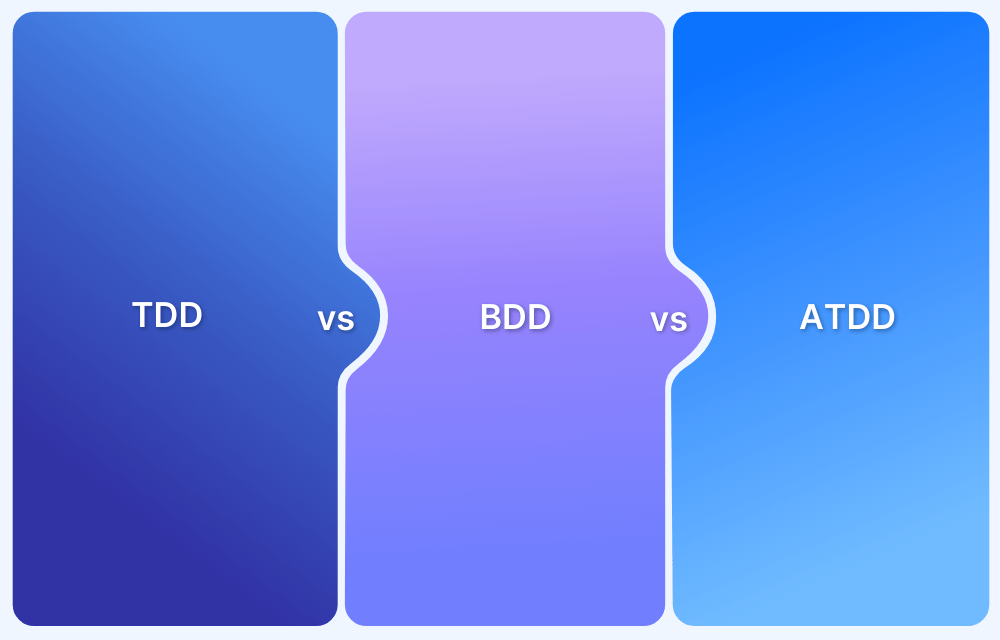Agile methodology thrives on flexibility and iterative development, but ensuring software meets user expectations requires effective collaboration across teams. Behavior-Driven Development (BDD) enhances Agile by defining tests in plain English from the user’s perspective, making requirements clear and reducing misunderstandings. Together, Agile and BDD streamline testing, improve communication, and accelerate delivery.
Overview
1. What Makes BDD Unique in Agile Testing
- Defines tests in Context–Event–Outcome format to reflect real user scenarios.
- Focuses on system behavior rather than technical implementation.
- Ensures software functionality matches customer needs from the start.
2. How BDD Differs from Code-Based Testing
- Code-based tests are difficult for non-technical stakeholders to interpret.
- BDD uses plain language, allowing collaboration between Business Analysts, Developers, and Testers (The Three Amigos).
- Promotes early clarification of requirements and prevents costly rework.
3. How BDD Enhances Testing Efficiency in Agile
- BDD tests can run throughout the development cycle, not just at the end.
- Provides continuous feedback, minimizing bugs and delays.
- Supports faster product releases while ensuring user expectations are met.
4. Drawbacks of Using BDD Without Agile Practices
- Writing BDD tests late mirrors waterfall issues — missed features, broken code, and delayed releases.
- Refactoring late in the cycle increases cost and complexity.
- Iterative BDD within Agile avoids these risks and maintains release velocity.
This article covers the BDD approach in Agile, its difference from code-based testing, its role in boosting testing efficiency, and the drawbacks of applying BDD without Agile practices.
What is BDD in Agile Methodology?
Behavior-driven development(BDD) is an agile testing method where the tests are written in plain English, and not in a programming language. Each test is made up of three sections:
- Context – This section defines the starting state of your use case
- Event – This is the action performed by the user in your use case
- Outcome – This section states the expected results for your use case
Let’s understand this through a user story. Consider a music streaming app, where you want the app to return the exact song that a user searches for. A BDD test would look like this:
- Context – Given you are on the search page on the music streaming application
- Event – When you type in the correct name of the song that you’re searching for
- Outcome – You’re returned the song that you searched for, along with the option to play it online or download it
BDD consists of test cases for how an application should behave from an end user’s standpoint. These test cases, although written in plain language, communicate with the code written by developers at the backend and are executed to check whether the features perform as expected.
BDD vs Tests Written Using Coding Languages
When tests are written in a programming language, they’re not interceptible to the business stakeholders. With BDD, through conversations, these stakeholders can clarify misunderstandings about user scenarios and correct mistakes in the tests written in plain English.
BDD also promotes frequent conversations among the key stakeholders, also known as ‘The Three Amigos”:
- Business Team (BA) – This consists of the Product Owner or the Business analyst who defines what problem is to be solved through the product
- Development Team (DevOps) – This consists of developers who provide a solution for how the problem will be solved
- QA team– This consists of testers who try to find bugs in the product and verify whether it works as expected and whether there are any edge cases where the product could fail
As an advantage, this helps develop the tests early on, as opposed to traditional testing using code where the QA team may or may not communicate frequently with the other stakeholders.
During the software development cycle, if parts of code need to be re-written, or if code is refactored at a future point in time, existing BDD tests can be used to test the new code. In contrast, some of the traditional test cases that are coded may need to be rewritten in such scenarios.
Whether tests are written using the BDD framework or using code, it’s important that they follow the agile methodology. Let’s explore why it’s important that BDD be agile.
BDD and Agile Together For Testing Efficiency
BDD tests can be written and executed anytime during the product development cycle. If at any given point, the product passes all the BDD tests, it gets a go-ahead from the QA team. If even a single test fails, it indicates that the product is not performing as expected and must be looked into.
Follow-Up Read: Debunking Myths about Agile Testing
Drawbacks of Non-Agile BDD Testing
Executing the behavior-driven tests at the end of the product development cycle has various drawbacks, similar to the traditional waterfall method:
- Rewriting the entire code may be time-consuming and may delay the launch of the product
- Rewriting one part of the code may break something else in the process and the entire testing process must be repeated, thus causing further delays
- The tests, if written at the end might not test all the features of the product, considering the earlier parts of the code were written much earlier
Making BDD in Agile
BDD and Agile must go hand in hand for more efficient testing. If the tests are written right from the beginning and executed at every step of the product cycle, there are minimum chances of bugs and delays at the end. This can help bring products to the market much faster while ensuring that it behaves the way users expect them to.
The practice of BDD in Agile focuses on syncing the collaboration and communication of teams effectively for a faster product release velocity.
Conclusion
Debugging products towards the end of the software development lifecycle can prove to be quite a daunting task. Apart from the bugs, if some functionality turns out to be misunderstood, it could lead to rewriting a major chunk of the code. This could push the release back by months. It’s therefore imperative to adopt a BDD agile methodology to get all the requirements right from the outset.
Getting started with behavior-driven development (BDD) is quite easy with Cucumber. In fact, it is highly recommended as Cucumber is used to execute automated acceptance tests written in the “Gherkin” language. Gherkin is a domain-specific language for behavior descriptions and is business readable.
Follow-Up Read: Test Automation using Selenium and Cucumber Framework: Tutorial
While running the Cucumber framework, testers would want to test their applications on multiple browsers, both live and automated. This is where cloud testing infrastructure like BrowserStack comes into the picture, providing a Cloud Selenium Grid of 3000+ real browsers and devices to choose from, thus making life easier for QAs. Go ahead and implement BDD in Agile to make your testing practices highly efficient.







